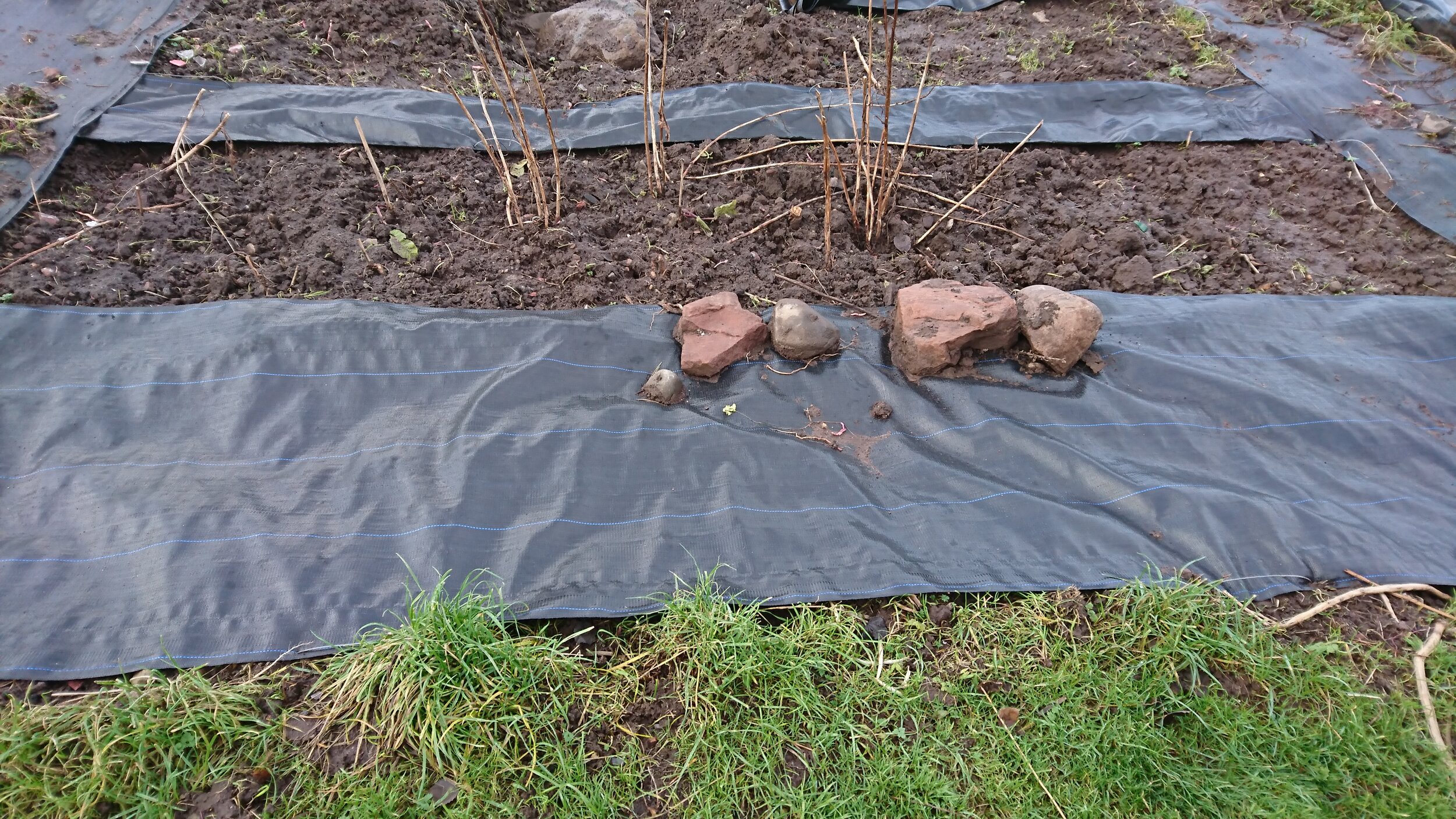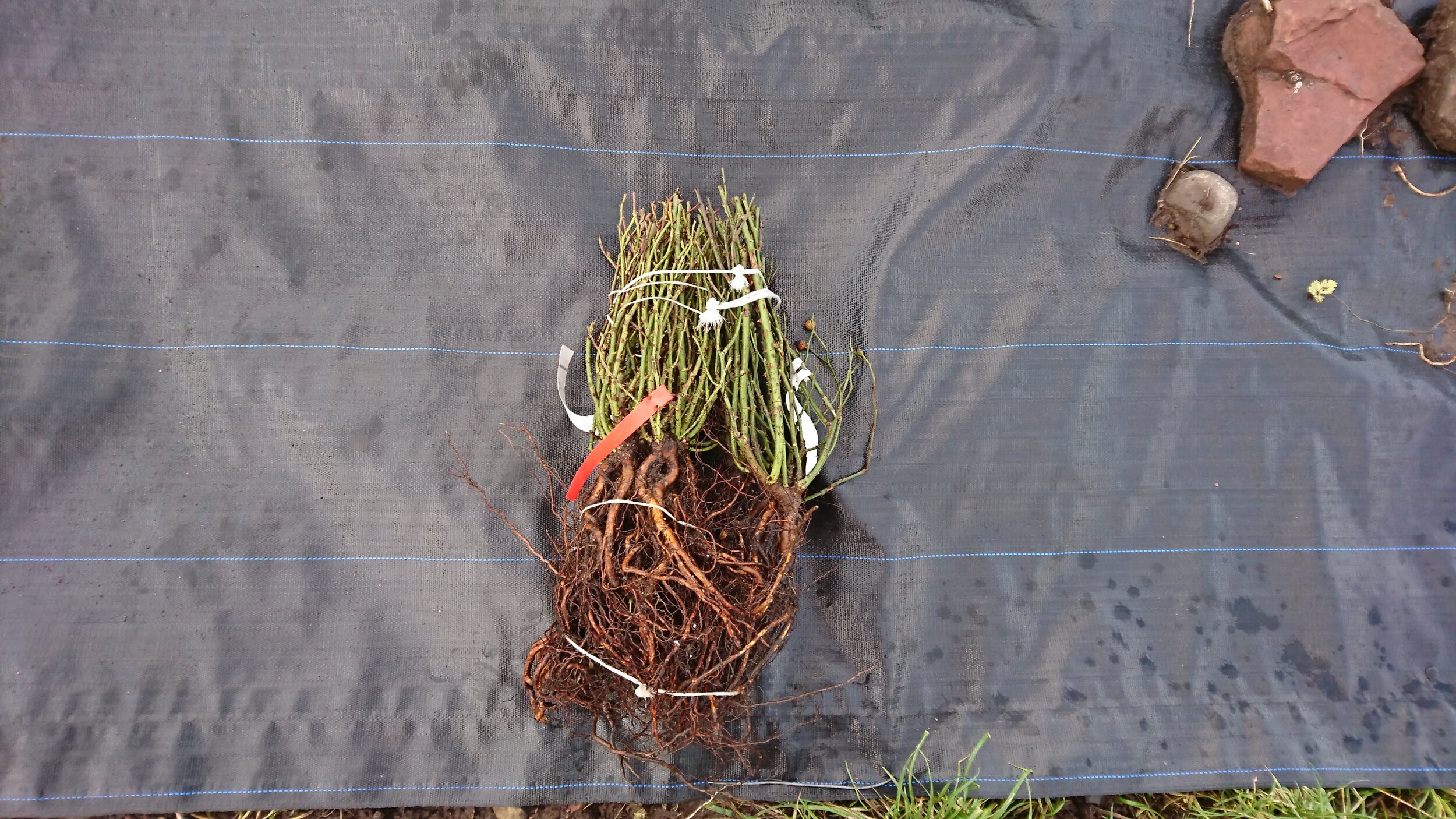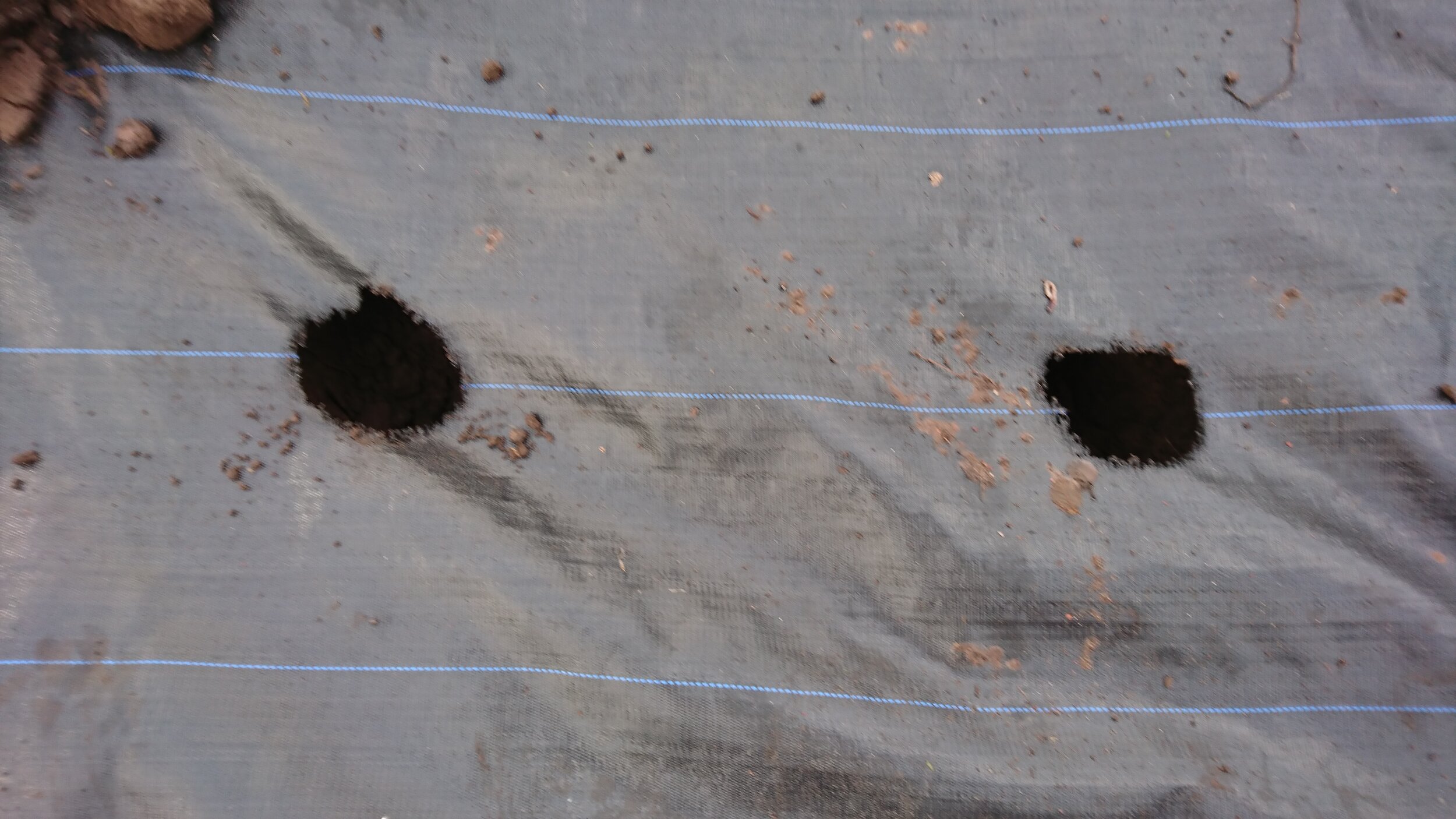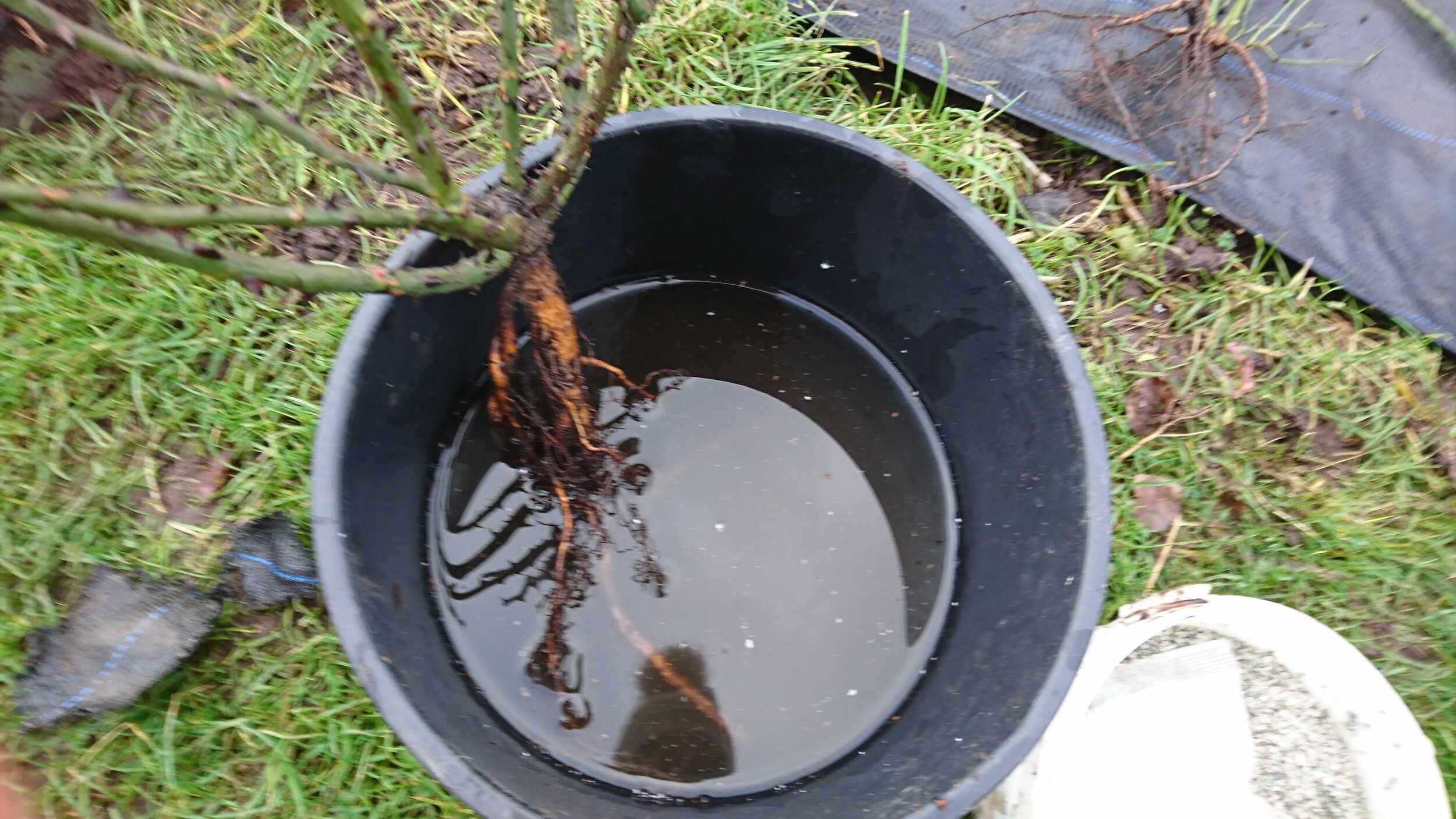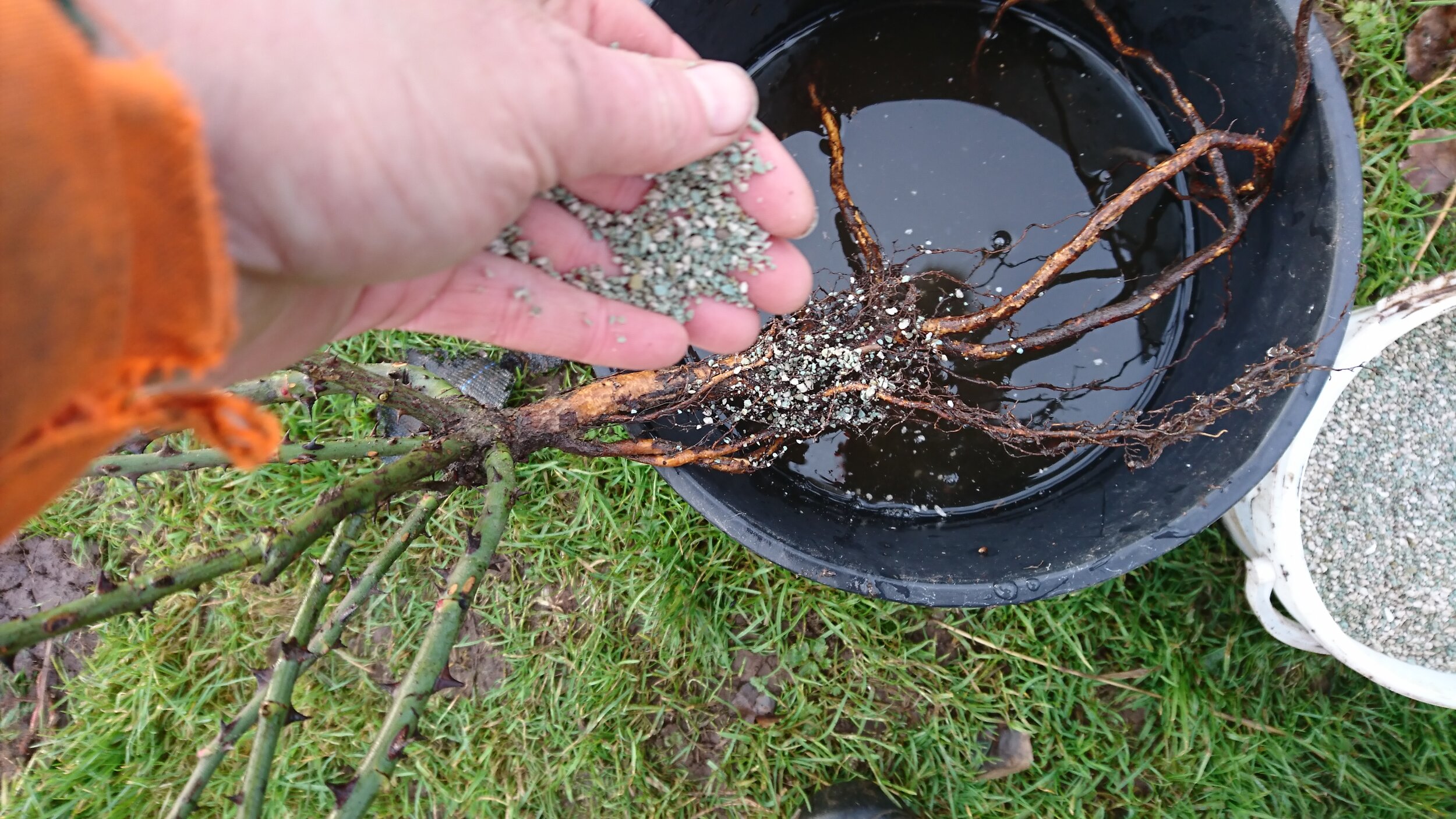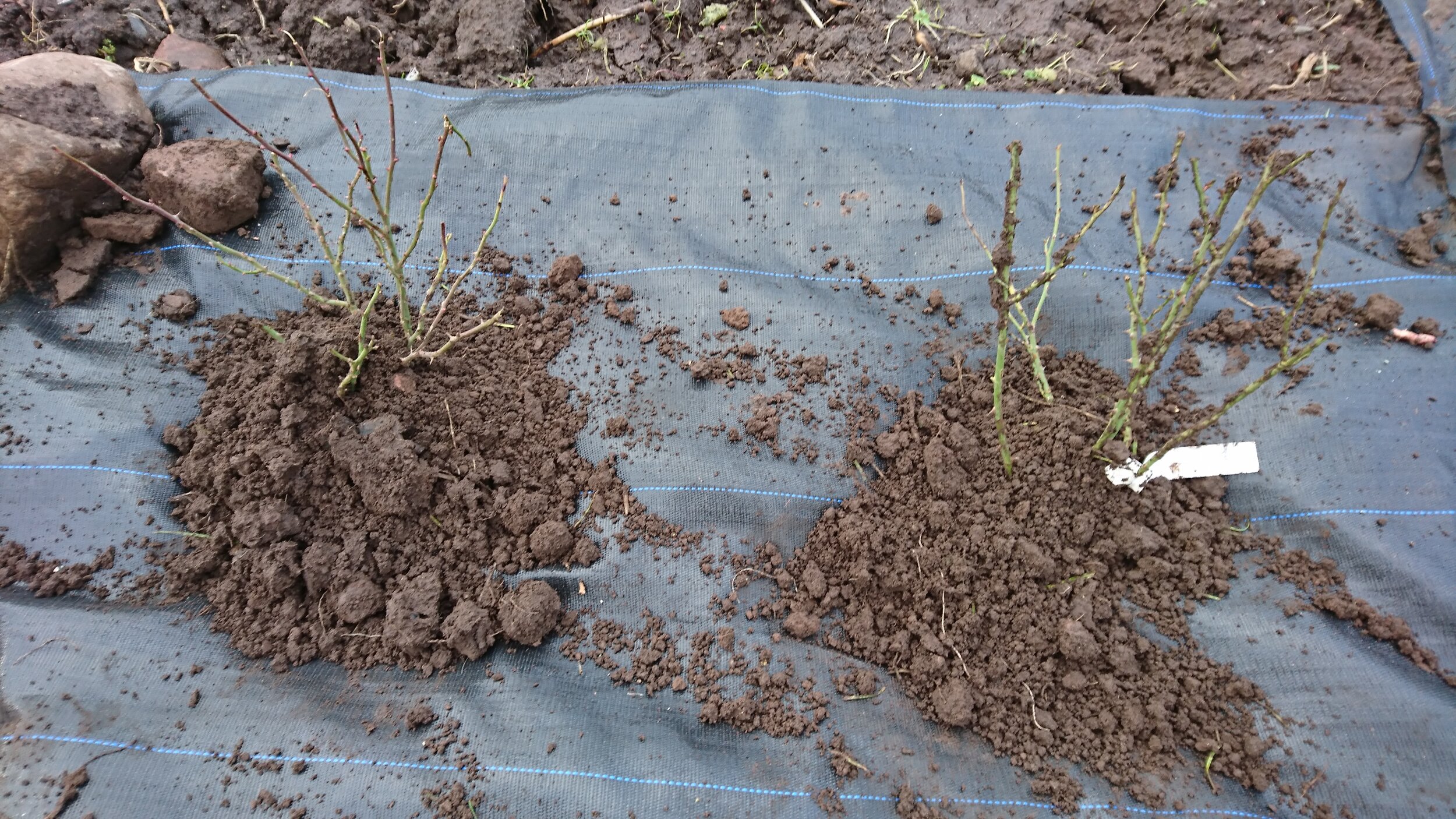Planning your purchases
If you’re planting roses for cut flowers you need to plan for them. Be really clear about who you’ll be selling them to, what they have to do for your customer and how long they should ideally last (be realistic!).
Roses are best purchased as bareroot – they’re cheaper and easier to transport and are sold when the plants aren’t actively growing. Bareroot plants are usually two years old, so should establish quickly and grow strongly. Bareroot roses are available from November to March but can often be ordered in advance to ensure getting the varieties you want. Potted plants can be bought all year round but can be restricted by being grown in a small space.
It’s easy to get distracted by catalogue photos of beautiful roses, social media posts and the enthusiasm of others. You should definitely love what you’re growing, but it should also do what you need it to do:
· Look during the summer, visit a good nursery or a lovely garden near to your plot that has a good labelled rose garden. It’s tempting to do this bit of research when you’re on holiday, but you really need to see what does well where your roses will be growing.
· Spend time looking, take lots of photos, but make sure you photograph the label too or you’ll forget what they all are! Try to go after a couple of days of rain and see how the blooms have fared outside in wet weather.
· Look in local gardens and ask questions of people who have good roses. What does well on my clay soil in Scotland may be very different to roses that thrive on Surrey chalk.
· Complete the Rose Checklist (below) to make sure the roses you’re choosing meet the criteria and will do a good job for you.
Suppliers
When you know what you want and you have a plan, then you’re ready to look for suppliers. I try to buy locally wherever possible. as the plants are much more likely to do well in our chilly conditions. However, with specialist plants it’s not always so easy to source locally. I’ve purchased from the following UK suppliers, all were good, easy to deal with and the plants sent out in good condition.
•J Parkers - very reasonably priced and good stock. A limited range, but tried and tested varieties. Available in small quantities from retail site or bulk from wholesale. Online only.
Retail https://www.jparkers.co.uk/shrubs/roses
Wholesale https://www.dutchbulbs.co.uk/c-f/roses/
•Rogers - Nursery in Yorkshire. Customers can visit the nursery field and view the huge number of varieties in flower. Online ordering of bareroot and pot grown plants.
http://www.rvroger.co.uk/index.php?linksource=listgroup&listgroupfile=roses
•Griffins Roses - wholesale rose nursery in Cambridgeshire. Varieties are grown to order so there is a long lead in time and high volumes are needed. Flowers from the Farm did a shared bulk order with Griffins Roses.
•David Austin Roses - rose breeder and cut flower seller. David Austin supply both retail and wholesale. They aren’t always terribly keen to supply wholesale to cut flower growers as they see it as competition for their own cut flower sales. Roses are good quality and they offer their own varieties plus some that are freely available. They can be ordered online or by phone. David Austin varieties can also be purchased from other wholesalers that grow under licence.
https://www.davidaustinroses.co.uk/
CK Jones - retail nursery in Cheshire supplying bareroot and potted plants. Online ordering only. Great plants and good customer service.
Additional rose nurseries:
Cottage Memories
Harkness Roses
Peter Beales Roses
Handley Rose Nursery
Parkside Nursery
Trevor White Roses
If you have a rose grower you’re happy to recommend add them to the COMMENTS at the end of this section - thank you!
Where to Plant
Roses thriving under cover
The planting site for roses is hugely important and can be crucial to success.
When you’re deciding where to plant your roses this is my advice:
Find or create the best, most sunny, sheltered spot in your flower field or plot
Improve the soil, get it the best you can
Remove weeds (or smother them)
Provide a cover if at all possible
Then plant your roses
Below is a pictorial step by step guide to rose planting
Prepare the ground - here it’s covered with landscape fabric
Burn holes in fabric at required distance and dig spacious planting holes
Dip rose roots in water
Apply mycorrhiza granules
Place in hole and backfill with earth. Don’t worry about piling up, the earth will settle. Make sure that roots are well covered or there is a risk that grafted plants will sucker from the rootstock.
CLICK on the next photo to move the carousel along
SOIL
Roses like lots of food and plenty of moisture so they need a soil that will provide that easily. Our clay soil is great for roses, it holds moisture and is very fertile. If you have a light, or sandy soil you will need to add plenty of organic matter to retain water and feed so that the roots of the plant can access it. Work on your soil before planting to give your roses the best start. General advice has changed over recent years to recommend adding feed such as manure to the surface of the soil rather than adding it to the planting hole.
A soil pH of 6.5-6.9 is ideal, so slightly acidic. If your soil is outside this range, the plants ability to access nutrients in the soil may be adversely affected.
Research has shown that adding Mycorrhiza when planting can help shrubs and trees to establish quickly by increasing the uptake of food and water by the plant. The mycorrhiza forms a web that allows the plant to access nutrients beyond its roots. It’s effect is hampered by phosphorus in growing conditions however, so it’s best to look carefully at it as an option to see if it will be beneficial for you.
TIMING
Plant roses as soon as you receive them. They are generally sent out bareroot in the early winter but can be ordered in pots throughout the year. If you’re ordering a lot, talk to the supplier about when they’ll be dispatched to make sure you’re ready to plant them as soon as they arrive.
PLANTING DISTANCES AND SUPPORT
Roses vary greatly in size and scale and their planting distance needs to take this into account. If you’re planting a vigorous rambler it will need plenty of space to sprawl. You don’t want a petite shrub rose to be too close to a strapping floribunda or it will be completely overshadowed.
Roses for cutting can be planted closer together than in a garden
If you can provide good soil, food and water for your plants, roses can be planted much more closely together than is recommended for garden roses (usually 1m apart). If you’re trying to squeeze as many roses as possible into restricted space or a greenhouse or tunnel, you’ll be pleased to know that shrub, floribunda and hybrid tea plants can be spaced as closely as 50cm.
Some plants will be sturdy and upright, quite able to hold their own in any weather. Others will need some support or they will flop to the ground and be battered by wind. Ramblers and climbers will obviously need a good framework to hold them up and will grow more vigorously if tied in to a firm base. Make sure when erecting supports that you can easily move around the plants to cut the blooms. I have a double row of plants with support posts up the middle so that the stems are easy to reach and cut.
Is all of this really necessary?
You might think that this is overkill, that roses can grow quite happily in a garden with very little attention and look beautiful. This is sometimes the case. In early summer it seems that there are so many roses everywhere, it must be so easy to grow them. And that can be true for garden plants, but look closely at the blooms and see how many will be good enough quality to use as cut flowers. If you’re selling them to florists or using them in a bridal bouquet, they need to be top quality, no blemishes, good strong stems, just at the right stage, and the right number of blooms. That’s much harder to achieve than a garden display where no one looks too closely at individual flowers.
Cover is a game changer in temperate climates. In Scotland, my polytunnel roses are more productive as they flower earlier ( in early May) and so fit in three ‘flushes’ of flowers before the end of the season. Outside, the blooming season starts later (in early June) so there are only two flushes of blooms.
I do grow roses outdoors and have planted more outside in recent years that are doing well. However, the varieties I’ve chosen for outside are carefully selected to be robust, healthy, hardy and with flowers that are unbothered by rain. There are fewer of these and they aren’t the most fashionable. The fashion for frilly, cup-shaped blooms doesn’t provide many roses that are good for growing outside. They look lovely in the garden but a heavy shower of rain, or a windy day can make the blooms damaged and unsaleable. Even in the far south-east of England, the Real Flower Company grows its roses under open-sided Spanish tunnels.
Rose tunnels at the Real Flower Company in Hampshire, UK


